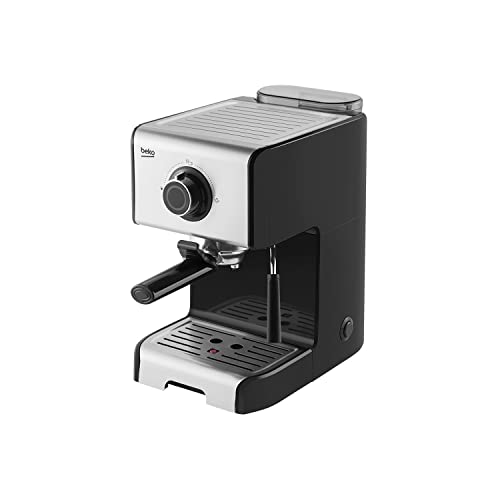How to Maintain Espresso Machines
Companies like car dealerships, hair salons and doctor's office are able to benefit from providing espresso drinks. Offering these drinks in a gourmet way will increase the patience of customers when they wait for services and improve the ambience of your establishment.
This nifty machine is an award-winning Good Housekeeping 2022 Espresso winner makes use of smart dosing to measure and distribute the ideal amount of ground coffee for each shot. It also includes an ice cream frothing wand for milk that was a success in our tests for making steaming milk.
The Basics
Espresso machines are an excellent addition to any home or office. They can be used to make numerous drinks, including lattes or cappuccinos. They function by pushing hot coffee into the ground with high pressure. This results in a concentrated drink that is full of flavor. It's a great source of caffeine, which is an effective stimulant.
These machines are available in an extensive range of sizes, from small ones for home use to larger ones to be used for commercial purposes. They are available in semi-automatic and manual designs. Semi-automatic machines have a built-in pump that regulates the water's flow and pressure. Manual machines require you to manage this manually. Some semi-automatic models include grinders, whereas others do not. The type of machine that you choose will depend on your budget and personal preferences.
The manual espresso machine is operated by turning a handle which forces water through the grounds in the filter basket. This kind of machine, also known as a macchinetta or caffettiera, is the most popular model of espresso maker. It has a bottom chamber that holds the water and a top chamber that houses an aluminum filter. When heated, the steam is forced through the coffee grounds before being pushed into the top of the machine. This is where the espresso is ready to serve.

Varieties
There are a variety of espresso machines available depending on your requirements. There are manual, semi-automatic and fully automated espresso machines. Each machine has its own distinctive way of producing espresso shots, as well as other beverages such as lattes and cappuccinos.
The first machines weren't fully automated. They required the user to manually operate the lever to create the required pressure to trigger one shot. They are still in use, but they are less common due to the effort required and the fatigue they can cause. Modern espresso machines employ various mechanisms to create pressure such as screw, push and see-saw designs. This allows the user to manage the pre-infusion process and the volume of water more precisely than the lever machine.
A pump-driven espresso machine is similar to the stovetop moka pot but uses an electric pump instead of steam to press the grounds. The boiler heats the water to boiling point, and the pump then pushes it through an affluent head. They are the most popular kinds of espresso machines and are generally less expensive than other types.
Semi-automatic espresso machines combine the best characteristics of pumps-driven and manual espresso machines. They allow the user to grind and tamp the beans but a motor controls the pressure to ensure consistent extraction. Some have a separate compartment for heating and frothing milk.
Functions
Commercial espresso machines can make a wide variety of coffees, including espressos, all at the push of a button. They use pre-packaged espresso capsules that are precisely dosed and packed to create an espresso cup or coffee. These machines are very popular in busy offices due to the fact that they eliminate the requirement for a grinding machine or dosing machine, as well as tamping. But, because they do not have steam functions, you'll require separate milk frothers to make lattes and cappuccinos.
Many cafes across Europe used steam machines to boost production and cut down on brewing times. But the first machines were heated by an open flame, resulting in inconsistent temperature and pressure. Angelo Moriondo, an Italian inventor from Turin, is credited with developing the first machine that could make coffee without steam.
The most commonly used type is the pump-driven espresso machine. They use an inlet to store the ground espresso beans. When the valve is adjusted to the espresso position the water is pumped at 15 atmospheres of pressure from the heating vessel. When the brew is finished, the portafilter is removed and the drip tray empty to be cleaned.
Automated espresso machines are semi-automatic systems by regulating the extraction times based on internal or volumetric timers. They also eliminate the barista's ability to grind or tamp coffee, which can impact the quality of the final product.
Maintenance
Espresso machines might not be the most attractive equipment in a café, but they are crucial. The way you maintain your espresso machine will affect the quality and taste of your drinks.
Clean espresso machines ensure that the flavor of your coffee doesn't suffer and that your customers' experience is great. Keeping up with espresso machines uk for cleaning and maintenance can also increase the life span of your espresso maker, so that it lasts for a long time.
Make use of a damp cloth and clean the portafilters and baskets every time you shift to remove any oil or residue. Backflush the gasket between the portafilter head as well as the grouphead by inserting the nylon brush and moving it around to get rid of any buildup. Rinse the gasket with water and run it through again until water is clear.
Mix espresso machine cleaner with water in a container, following the directions of the manufacturer once a week, or as required. Then soak the portafilters, gratings, and baskets overnight in the cleaning solution. If your espresso maker has a steam wand, remove the wand and screen from the group with a screwdriver and soak them separately in the cleaning solution.
